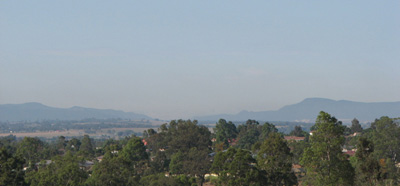As my mountain is not of sandstone, the sandstone ridges and gorges through which the Goulburn River meanders (when it isn’t rushing along in flood!) provided visual treats that no manmade sculptures could rival. The range was staggering.
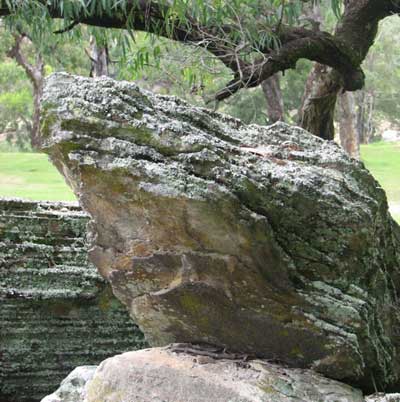
Mighty boulders, long broken off, rolled far from their parent cliffs, rested at odd angles in a sea of grass, gathering lichen and inviting fancies of petrified creatures.
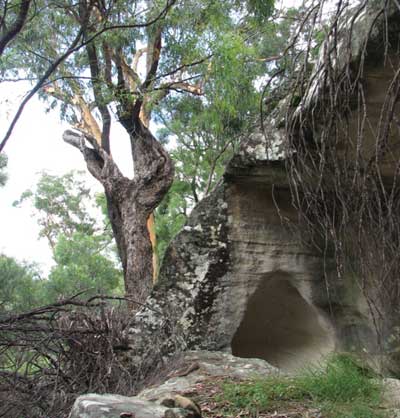
On the slopes, small and perfect grottoes, protected, glowing pure white or golden, offered shelter to wallabies.
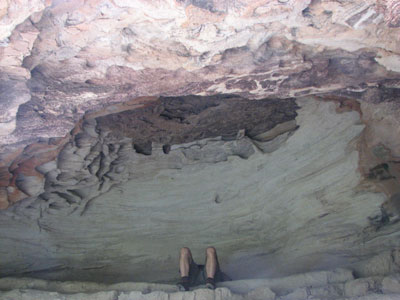
Less common were the very large caves, stepped, sand-floored, roofed with intricate honeycombs of differing colours and materials – and these must have once offered shelter for humans.

And humans had been here. Elsewhere in the National Park there are apparently caves with Aboriginal paintings on the walls. There was evidence of later occupation, and typically, of greater impact.
Off a management track, an uphill offshoot, faint and overgrown, became an old wagon track, hewn – not blasted – out of the rock to reach the ridge and continue over the plateau to the next valley.
I hope that determined settler found the effort was worth it. The rock remains indifferent to that blip in its time.


 The Envirowiki website was started in late August, 2006. It’s slowly getting bigger, but it needs your help!
The Envirowiki website was started in late August, 2006. It’s slowly getting bigger, but it needs your help!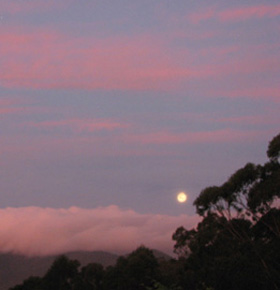
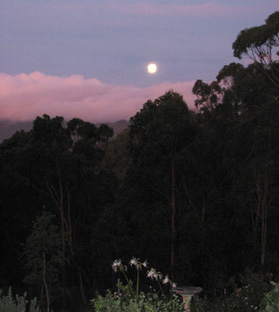
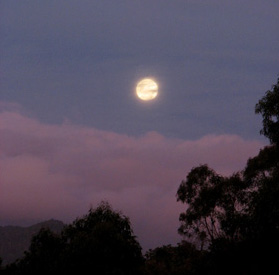
 My last full moon teamed up with the sun for a brief pas de deux between their respective acts.
My last full moon teamed up with the sun for a brief pas de deux between their respective acts.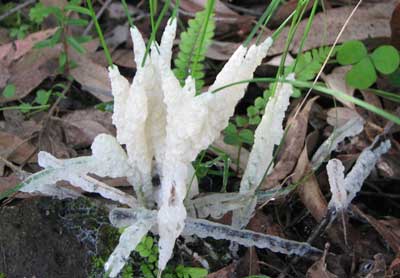
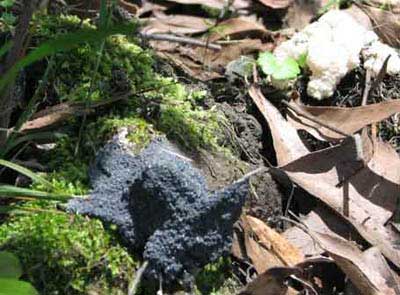
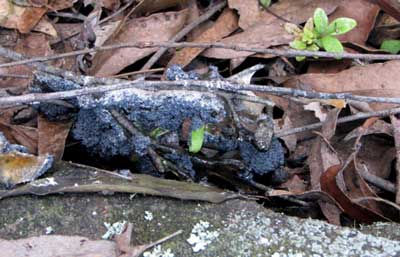

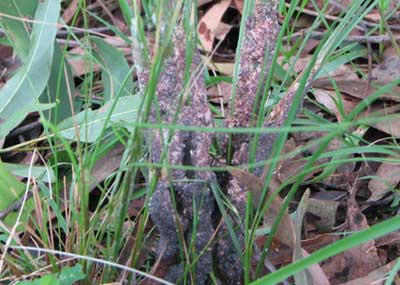
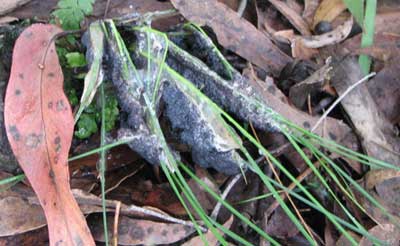
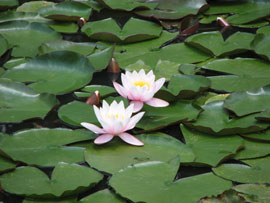
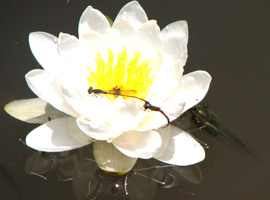
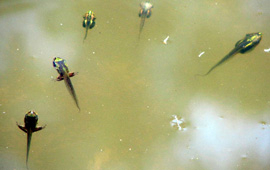
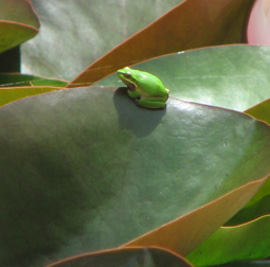
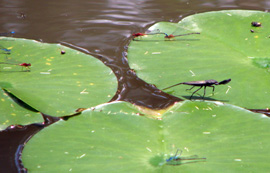
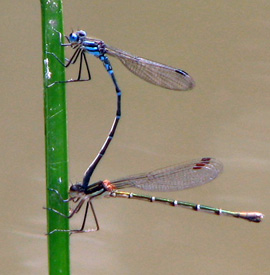 On my small dam the waterlilies are blooming, their large circular leaves so abundant that they are overlapping, curling up at their edges.
On my small dam the waterlilies are blooming, their large circular leaves so abundant that they are overlapping, curling up at their edges.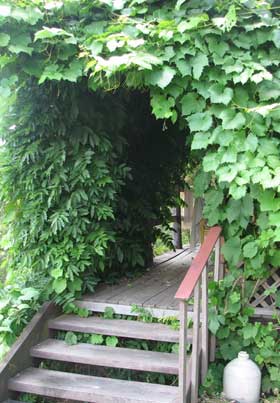 In Autumn the ornamental grape and wisteria vines on my verandah were a visual treat — a rich riot of warm colours.
In Autumn the ornamental grape and wisteria vines on my verandah were a visual treat — a rich riot of warm colours.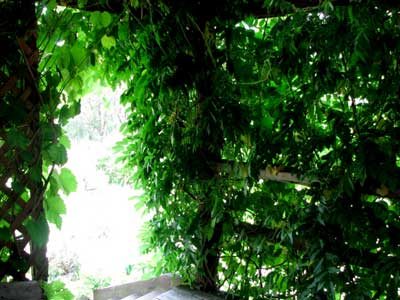
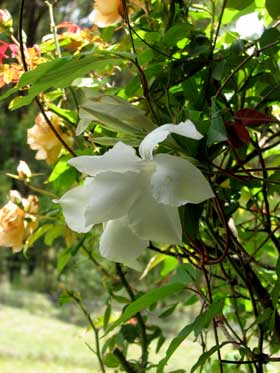 ‘Pray enter a refuge from the glare and heat of summer’, say my front steps, leading to a doorway in the vines.
‘Pray enter a refuge from the glare and heat of summer’, say my front steps, leading to a doorway in the vines.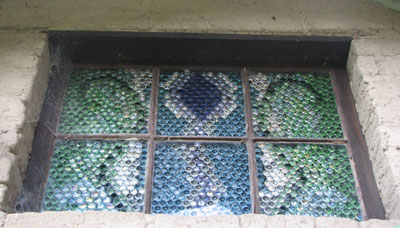

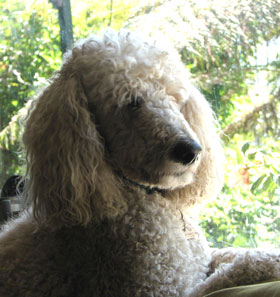
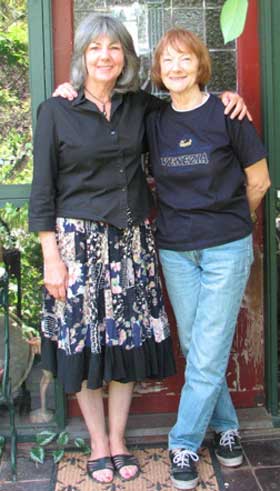 While in Victoria I spent an amusing few hours on a community radio (3MDR) show with host Ann Creber. This dynamic pixie of a woman also hosted me for several days at her home, which she shares with husband David, two large poodles, Nina and Georgie, and hundreds of antique dishes and pots and pans — props for her food photography styling — plus more modern gear for menu testing as well as cooking for her ‘Whispers of Provence’ lines of preserves, jams and vinegars.
While in Victoria I spent an amusing few hours on a community radio (3MDR) show with host Ann Creber. This dynamic pixie of a woman also hosted me for several days at her home, which she shares with husband David, two large poodles, Nina and Georgie, and hundreds of antique dishes and pots and pans — props for her food photography styling — plus more modern gear for menu testing as well as cooking for her ‘Whispers of Provence’ lines of preserves, jams and vinegars.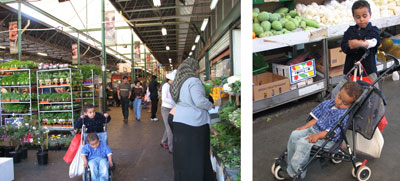
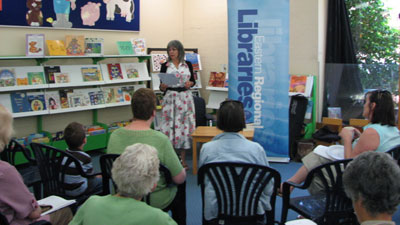
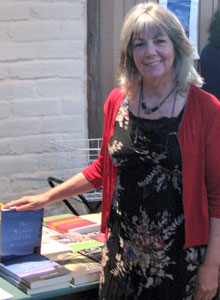 At the marvellous mudbrick Eltham Library they nibbled on cheese and bickies and sipped wine in an equally civilised manner. Hot question times followed, and at Eltham we only stopped because the library was closing.
At the marvellous mudbrick Eltham Library they nibbled on cheese and bickies and sipped wine in an equally civilised manner. Hot question times followed, and at Eltham we only stopped because the library was closing.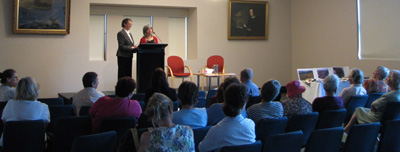
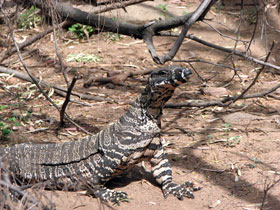
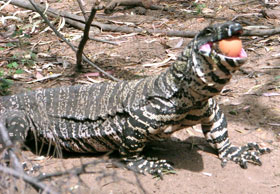
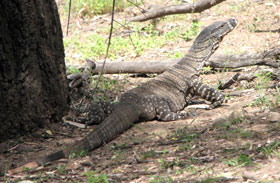 I haven’t seen goannas on my mountain, but they are quite common in many places. This one, the Lace Monitor, is the only type I’ve ever seen, mostly in sandy areas.
I haven’t seen goannas on my mountain, but they are quite common in many places. This one, the Lace Monitor, is the only type I’ve ever seen, mostly in sandy areas.